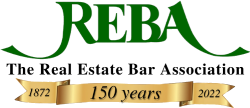A newly arisen boundary
dispute with a neighbor will frequently prompt a homeowner to come to the
registry of deeds in search of his deed and a plan of his property. The
expectation that these
documents will resolve the problem is soon punctured by
the realization that even the most precisely drawn deed or plan is of limited
use unless one can accurately translate a point on the document to a point on
the ground.
 |
| Middlesex North Registry of Deeds |
While there will always
be a need for surveyors and civil engineers, a uniform system of corner markers
embedded in the ground would do much to resolve these kinds of disputes. But
physical markers are expensive to emplace and subject to loss or relocation.
Perhaps technology will provide a solution to this problem.
The same GPS technology
that guides your car to its destination also has the potential to resolve
boundary disputes like the one described above, and to revolutionize land
records in the process. GPS devices calculate their location by “triangulating”
electronic signals emitted by GPS satellites that continuously orbit the earth.
The result is given as the latitude and longitude of the GPS device, numbers
often referred to as GPS coordinates.
So what does GPS have
to do with land records? By including the GPS coordinates of corner points and
other terrain features on new subdivision plans (and perhaps even on new deeds),
the challenging task of aligning a point on a document with a point on the
ground will become infinitely easier. Supplied with the GPS coordinates of his
lot line, a homeowner with a GPS-enabled smart phone would be able to accurately
identify the boundary line on the ground and resolve the dispute.
Consumer grade GPS devices
today are only accurate to about six feet, but more expensive military and
commercial grade devices are more precise with error rates of only a few
inches. History teaches us that technology always gets better and more
affordable over time, so soon the GPS capability of the standard cell phone
will be as accurate as its more sophisticated counterparts.
While mandating the
inclusion of GPS coordinates in subdivision plans and deed descriptions will be
a big undertaking, there are other steps registries of deeds should take now to
ease the coming integration of real estate documents and mapping technology. A
starting point would be to include the MassGIS parcel location identification
number – the LOC_ID – in the registry of deeds database. MassGIS, the state
agency responsible for geographic information in the Commonwealth, selects a
point within each parcel of land in the state and uses the latitude and
longitude of that point – its GPS coordinates - for the parcel’s LOC_ID.
Because this same ID number is already included in every assessor’s database in
Massachusetts, LOC_ID is the digital link that connects mapping and assessing
information. By adding LOC_ID to the registry database, deeds and subdivision
plans could be similarly linked to mapping and assessing information. Once this
LOC_ID link was established, users viewing a deed could, with a single click,
display assessor information for the parcel and, with a second click, view the
parcel on the state’s mapping system.
Creating a new field in
the registry database would be relatively easy. Populating that field with data
will be the big challenge. One possibility would be to amend the Massachusetts
Deed Indexing Standards to require the LOC_ID of a parcel being conveyed to be included
in new deeds and subdivision plans and for the registry to capture that
information in its database. However, an easier way to capture LOC_ID
information might be through the use of standard addresses.
Property addresses have
never been a central feature of our system of land records. It was only in the
late 1990s that we consistently added street addresses to our database. Even
today, address is a flawed method of searching land records.
One way to make
property addresses more useful in registry of deeds records is for the Commonwealth
to adopt standard addresses. With a list of standard addresses, the address
field on registry computer systems could be converted from today’s “enter
whatever address is on the document” field to a drop down menu of standard
addresses. To be recorded, the property address on a document would have to
match an address on the drop down menu of standard addresses. This would increase
the accuracy of address searches on registry computer systems and, because
standard addresses could be programmatically linked to the corresponding LOC_ID
number of the parcel involved, the registry’s LOC_ID field would be
automatically populated each time the address field was filled.
While much of the above
may seem far-fetched to those in practice today, our records are inextricably
linked to land. Anything we can do to better connect registry records to the
land depicted in those records will benefit everyone. The exact path we should
take is unclear, but technology is propelling us rapidly forward. Now is the
time to convene a working group of registry personnel, conveyancers, surveyors,
and GIS and IT professionals to help guide us through the integration of
registry of deeds records and mapping technology.
Dick
Howe’s column, “From the Recording Desk...,” is a regular feature of REBA
News. Dick has served as register of
deeds in the Middlesex North Registry since 1995. He is a frequent commentator on land records
issues and real estate news. Dick can be
contacted by email at richard.howe@sec.state.ma.us.

